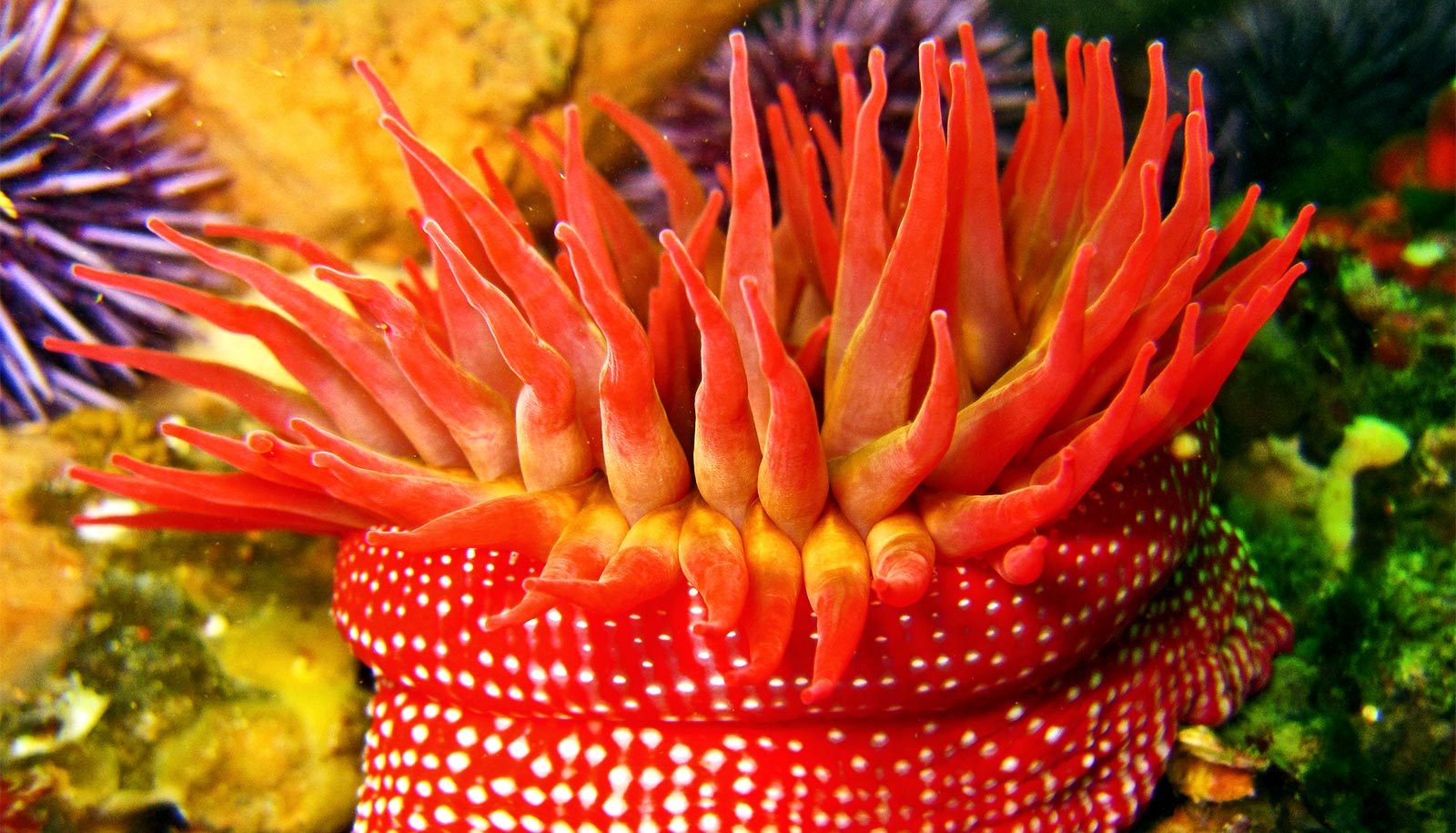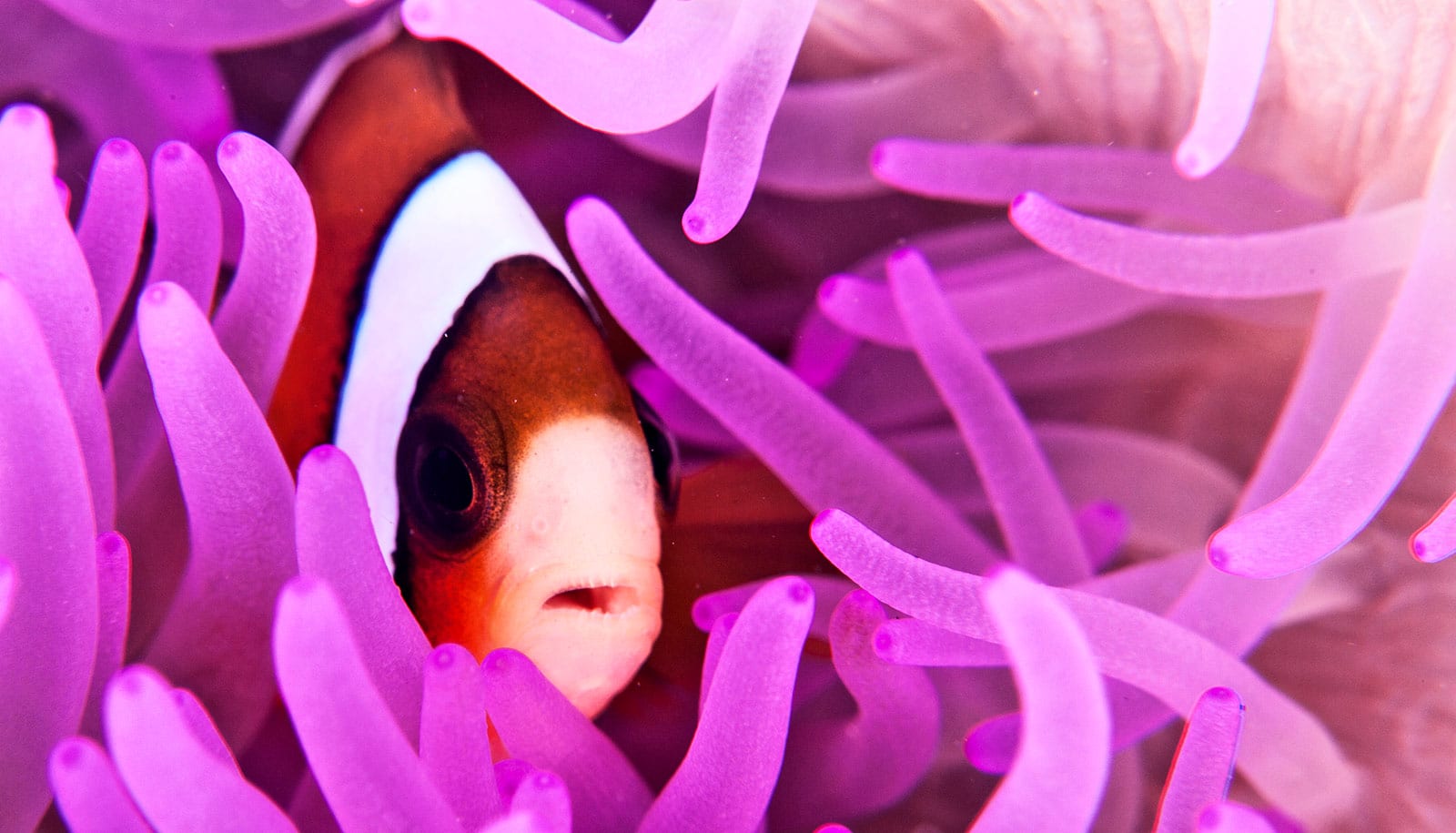Sea anemones have a backup strategy when food is difficult to find: their symbiotic relationship with tiny algae living under their skin.
New findings describe how anemones control this remarkable interaction. The discovery provides new insights into ways organisms form associations that make them more successful than if they lived by themselves.
Sea anemones typically feed on mussels, shrimp, squid, and other prey, but if this food isn’t available, they can obtain sugar from the photosynthesizing algae that live inside them. In exchange, the algae receive the nitrogen they need from the sea anemones. However, there is a potential downside to the relationship, because the anemones suffer if the algae become too numerous.
To examine how the creatures manage the interaction, researchers waded into tidepools on the central California coast. They studied sea anemones from two species dwelling in the region’s waters, experimentally adding or removing food, including mussels, squid, and whatever else the anemones had eaten.
“We found when sea anemones have lots of food, they don’t need as much energy from photosynthesis, and therefore host fewer algae,” says Matthew Bracken, a professor of ecology and evolutionary biology at the University of California, Irvine. “When less food is available, and the sea anemones require more energy from photosynthesis, the algae proliferate. The mutualism between sea anemones and their algae is flexible and depends on how effective the anemones are at capturing food.”
He says the anemones control the number of algae they contain by spitting them out if they aren’t needed.
“This flexibility may help explain why the sea anemones are so good at surviving periods of low food abundance,” says first author Samuel Bedgood, a graduate student in ecology and evolutionary biology. “The ability of organisms to form close associations that allow both to be more successful has puzzled biologists, especially in terms of how these fragile relationships are maintained.”
The team’s discovery with California coastal anemones offers insights into the workings of coral reefs, which rely on algal symbionts to live in tropical waters where nutrients are scarce. The findings also help understand how ecosystems can respond to environmental stresses such as increased ocean temperature. The researchers are now interested in examining the relationship between sea anemones and the marine animals that share their habitat.
“During high tide, the anemones pull in water and during low tide, they cool themselves by expelling it in small amounts,” Bracken says. “This creates a moist patch that helps snails and other small mollusks survive the harsh, low-tide conditions. It is another example of the partnerships that benefit the individuals involved.”
The research appears in the Proceedings of the Royal Society B.
The researchers conducted their study at the Kenneth S. Norris Rancho Marine Reserve in Cambria, California, part of the University of California Natural Reserve System. Funding for the research came from UC Irvine Oceans, Changing Environments, Arts, and Nearshore Societies (UCI OCEANS) and the National Science Foundation.
Source: UC Irvine


